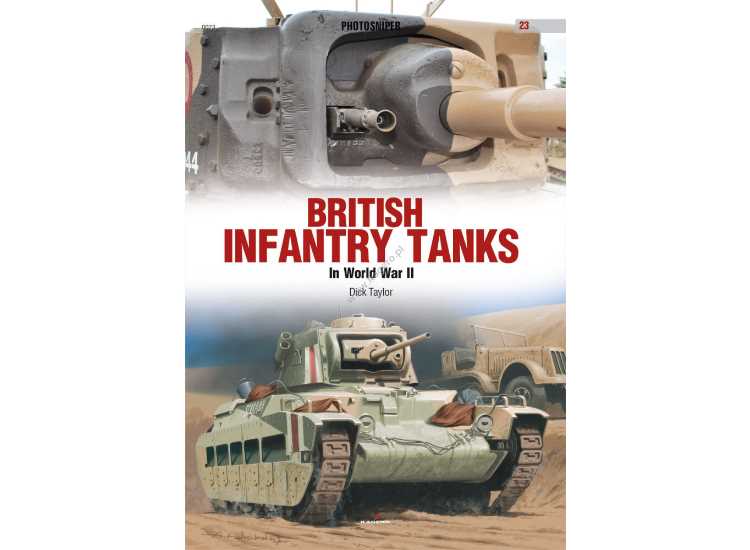Kagero
SKU:KAG0023
Kagero KAG0023 - - Photosniper 23 - British Infantry Tanks In World War II
Kagero KAG0023 - - Photosniper 23 - British Infantry Tanks In World War II
Regular price
£16.22 GBP
Regular price
Sale price
£16.22 GBP
Unit price
per
Taxes included.
Shipping calculated at checkout.
Low stock: 3 left
Couldn't load pickup availability
Books Profiles Mags
Profiles
Before the start of the Second World War, British armoured doctrine was in a terrible muddle. Opinion had been divided between the proponents of the tank who saw it as the weapon of break-in, using it as an infantry support weapon, and those who saw it as the weapon of break-out, using it to restore mobility and to destroy the enemy’s forces behind the frontline. In many ways it was a division between those who saw the tank solely through the prism of the experience of the First World War, and those who saw it a decisive weapon for the future. Britain was also conscious of the continuing requirements for imperial policing, in which small tanks and armoured cars had already proved their worth. As a consequence, it was decided that Britain needed three different classes of tanks: Light tanks for the policing role that could also be used for reconnaissance duties in a general war; fast and lightly armoured Cruiser tanks for break-out and exploitation, and heavily armoured but slow Infantry tanks for the break-in.
96 pages
about250 archive photographs
12 color profiles (12 views)
Gloss coated paper
Format (sizes): A4 (210x297 mm)
Soft cover binding
Note *** Plastic Model Kits do not come with Glue & Paints unless stated otherwise.
View full details
Profiles
Before the start of the Second World War, British armoured doctrine was in a terrible muddle. Opinion had been divided between the proponents of the tank who saw it as the weapon of break-in, using it as an infantry support weapon, and those who saw it as the weapon of break-out, using it to restore mobility and to destroy the enemy’s forces behind the frontline. In many ways it was a division between those who saw the tank solely through the prism of the experience of the First World War, and those who saw it a decisive weapon for the future. Britain was also conscious of the continuing requirements for imperial policing, in which small tanks and armoured cars had already proved their worth. As a consequence, it was decided that Britain needed three different classes of tanks: Light tanks for the policing role that could also be used for reconnaissance duties in a general war; fast and lightly armoured Cruiser tanks for break-out and exploitation, and heavily armoured but slow Infantry tanks for the break-in.
96 pages
about250 archive photographs
12 color profiles (12 views)
Gloss coated paper
Format (sizes): A4 (210x297 mm)
Soft cover binding
Note *** Plastic Model Kits do not come with Glue & Paints unless stated otherwise.


